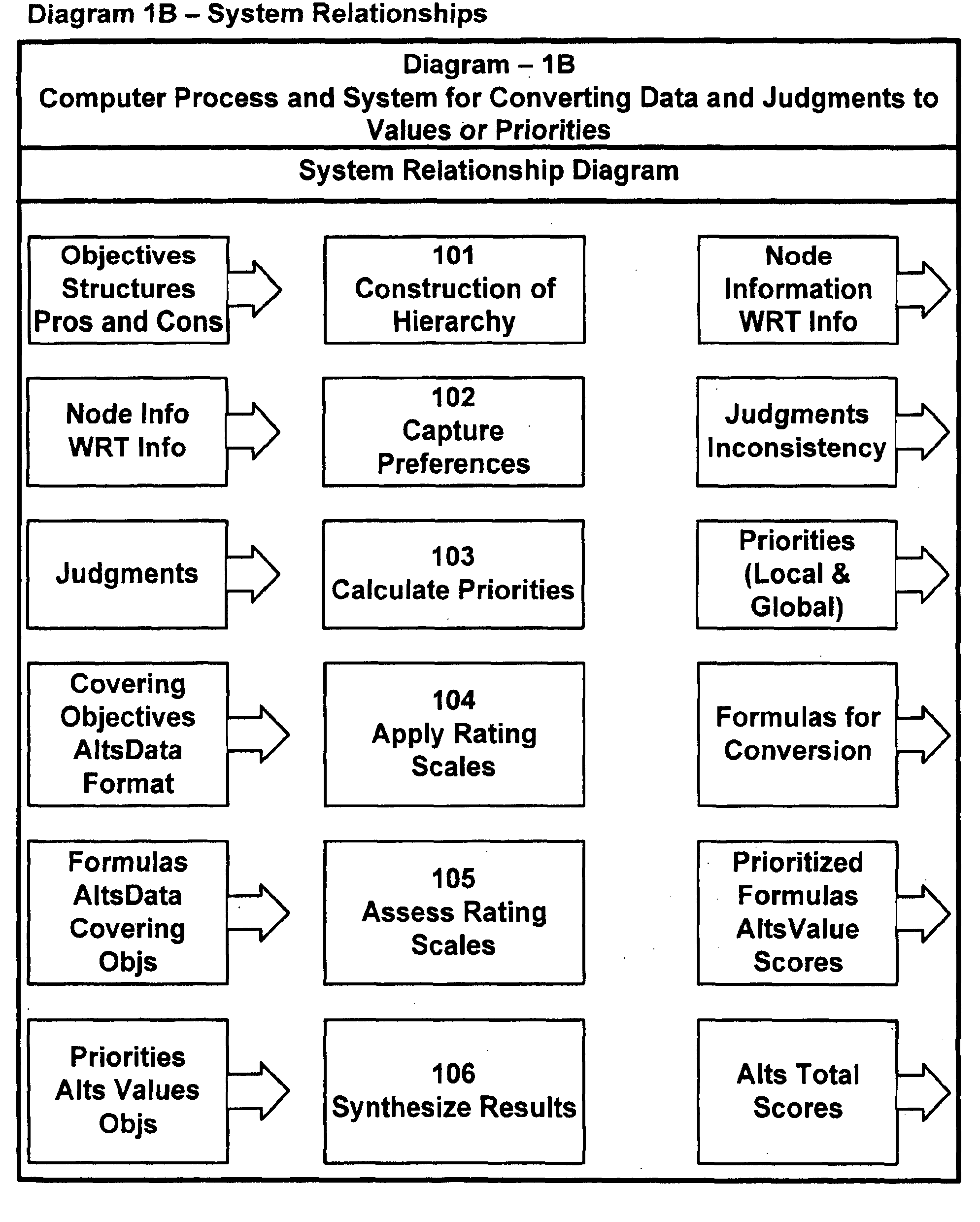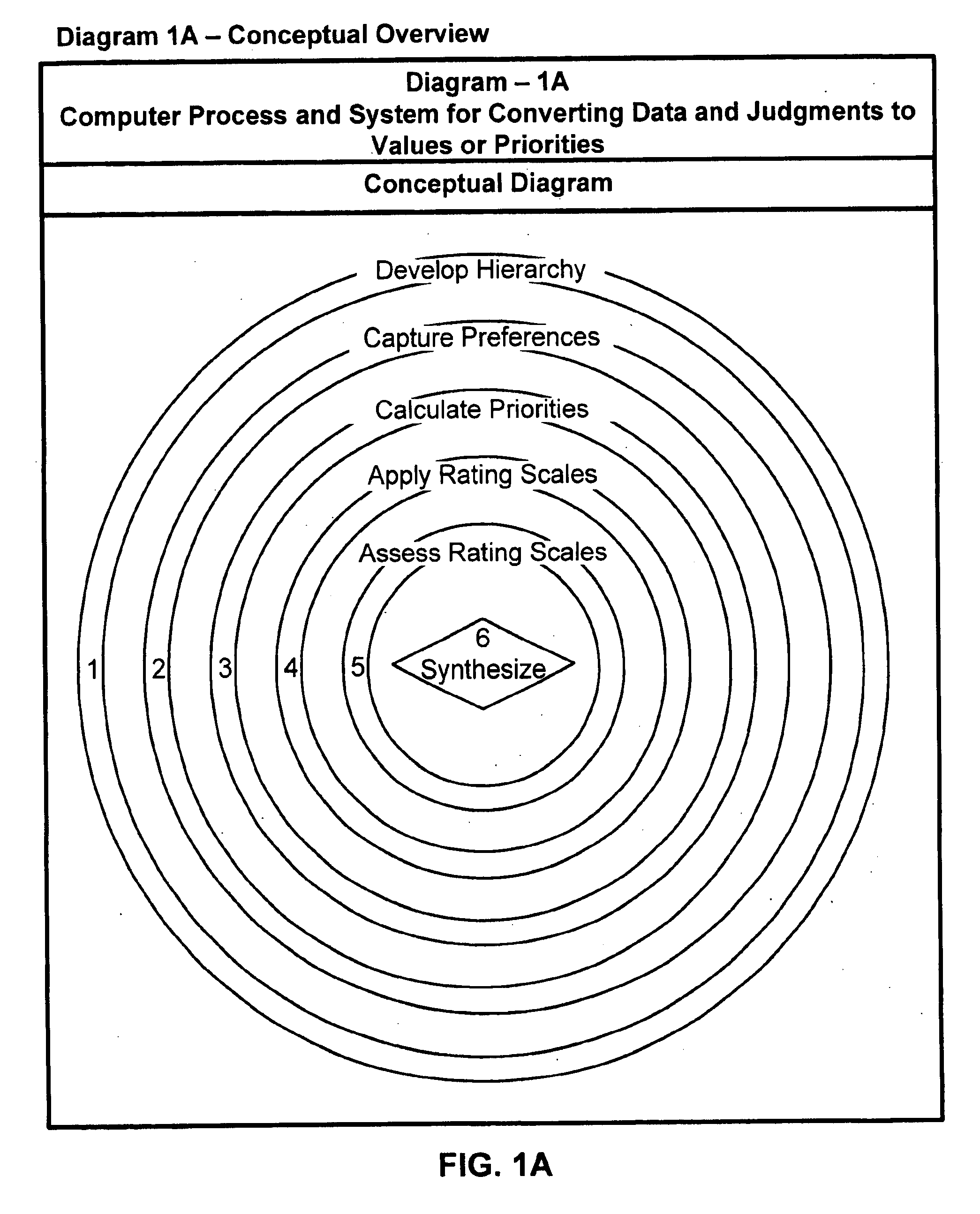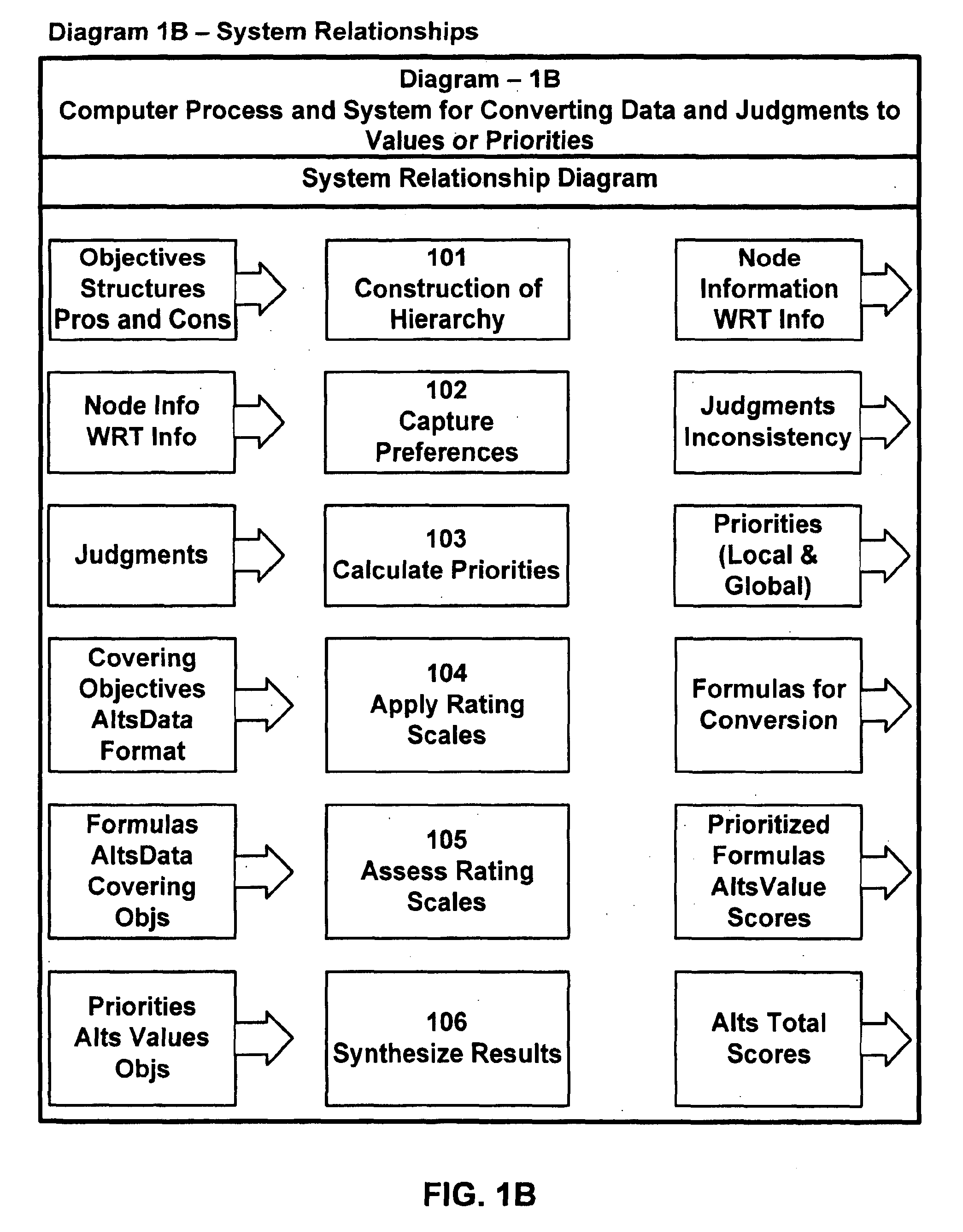Method and system of converting data and judgements to values or priorities
a technology of value or priority and data, applied in the field of decision processing, can solve the problems of constant human intervention, consistently inaccurate aspect of computer-based decision making, and essentially no more accurate value scores, and achieve the effect of accurate ranking
- Summary
- Abstract
- Description
- Claims
- Application Information
AI Technical Summary
Benefits of technology
Problems solved by technology
Method used
Image
Examples
Embodiment Construction
A preferred embodiment of the subject invention comprises a series of processes that when implemented as a system create an application that converts raw data and judgments into value scores and priorities.
In a preferred embodiment, a hierarchy of elements is constructed. The elements are to be prioritized using hard data and judgment. The hierarchy might represent a decision and could contain players, scenarios, objectives, sub-objectives, sub-sub-objectives and other levels, alternatives, and other information. The hierarchy might represent a forecast and contain influencing factors, players, or scenarios. In a preferred embodiment, the hierarchy of elements is constructed using either a top down or bottom up approach, or a combination of both by dragging and dropping elements.
For the construction of a decision hierarchy, identifying pros and cons, and converting the pros and cons into objectives, see U.S. Pat. No. 5,995,728, to Forman, the contents of which are incorporated herei...
PUM
 Login to View More
Login to View More Abstract
Description
Claims
Application Information
 Login to View More
Login to View More - R&D
- Intellectual Property
- Life Sciences
- Materials
- Tech Scout
- Unparalleled Data Quality
- Higher Quality Content
- 60% Fewer Hallucinations
Browse by: Latest US Patents, China's latest patents, Technical Efficacy Thesaurus, Application Domain, Technology Topic, Popular Technical Reports.
© 2025 PatSnap. All rights reserved.Legal|Privacy policy|Modern Slavery Act Transparency Statement|Sitemap|About US| Contact US: help@patsnap.com



